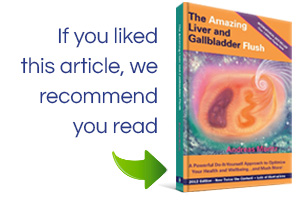By Andreas Moritz
Although bone is the hardest tissue in the body, it is, nevertheless, very much alive. Human bone consists of 20% water, 30-40% organic material, such as living cells, and 40-50% inorganic material, such as calcium. Bone tissue harbors many blood and lymph vessels, and nerves. The cells responsible for balanced bone growth are the osteoblasts and osteoclasts. Osteoblasts are the bone-forming cells, whereas osteoclasts are responsible for resorption of bone to maintain optimum shape. A third group of cells, known as chondrocytes, are in charge of forming cartilage. Red bone marrow, which produces red and white blood cells, is located in the less dense parts of the bone, called cancellous bone.
Most bone diseases occur when bone cells no longer receive enough nourishment. Gallstones in the liver always lead to lymph congestion in the intestinal tract and, consequently, in other parts of the body (see Disorders of the Circulatory System). Good bone health results from the sustained balance between the functions of osteoblast and osteoblast cells. This delicate balance becomes disturbed when deficient nutrient supply slows the production of new bone tissue by osteoblasts. Osteoporosis results when the amount of bone tissue is reduced because growth of new bone does not keep pace with destruction of old bone. Cancellous bone is usually affected before compact bone is. Compact bone makes up the outer layer of the bone.
In generalized osteoporosis, excess calcium is reabsorbed from bone, thereby raising the calcium levels of blood and urine. This may predispose a person to form stones in the kidneys and, eventually, suffer renal failure. Gallstones in the liver substantially reduce bile production. Bile is essential for the absorption of calcium from the small intestines. Even if there were plenty of calcium made available from one’s food or through food supplements, shortage of bile renders much of the ingested calcium useless for bone formation and other important metabolic processes. In addition, the presence of gallstones in the liver raises the level of harmful acids in the blood, some of which are neutralized by calcium released from the bones and teeth. Eventually, these calcium reserves become depleted, diminishing bone density or bone mass. This may lead to bone and hip fractures, and even death. With over half of all women over age 50 already affected by osteoporosis (albeit only in industrialized nations), it is obvious that the current approach of taking hormones or calcium supplements is a shot in the dark; it does in no way address the causal imbalance in the liver and gallbladder.
Rickets and osteomalacia are diseases that affect the calcification process of bones. In either case, the bones become soft, especially those of the lower limbs, which become bowed by the weight of the body. The fat-soluble Vitamin D, calciferol, is essential for balanced calcium and phosphorus metabolism and, therefore, healthy bone structures. Insufficient bile secretion and disturbance of the cholesterol metabolism, both of which are caused by gallstones in the liver, lead to Vitamin D deficiency. Lack of exposure to ultraviolet light further aggravates the situation.
Infection of bones, or osteomyelitis, may result when there has been a prolonged lymphatic obstruction in the body, especially in or around bone tissues. Consequently, blood-borne microbes gain unhindered access to bones. The microbes may originate from gallstones, a tooth abscess or a boil.
Malignant tumors of the bone can occur when lymphatic congestion in the body and the bones, especially, has reached extreme proportions. The immune system is depressed and malignant tumor particles from the breasts, lungs or prostate gland can spread to those bones that have the best blood supply, i.e., the cancellous bone. Bone cancer and all other diseases of the bone signify lack of nourishment of bone tissue. They usually defy treatment unless all gallstones in the liver are removed and all other organs and systems of elimination are cleared from any existing obstruction as well.
You may share or republish this article provided you clearly mention the name of Andreas Moritz and paste a hyper link back to the post.

